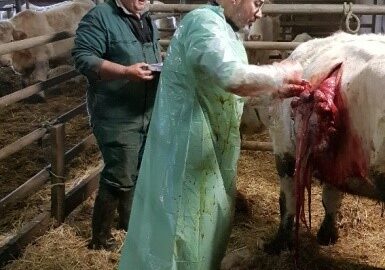Audit boiterie (approche CASDAR santé) chez les bovins laitiers

Auteurs
Résumé
L’augmentation de la taille des cheptels, l’intensification des regroupements de troupeaux durant ces dernières années ainsi que l’augmentation de la charge de travail qui en a découlé pour les éleveurs ont favorisé l’augmentation de la fréquence des boiteries. Les pertes économiques induites sont importantes, les boiteries étant le troisième motif de réforme en élevage laitier. Plusieurs maladies du pied sont souvent présentes de manière concomitante dans les troupeaux et les causes identifiables sont bien souvent multifactorielles. Pour cette raison il apparaît important, en matière de boiteries, d’effectuer une démarche diagnostique rationnelle en commençant par l’observation de la posture des animaux et l’identification des lésions au moment du parage afin de s’orienter ensuite de façon aisée vers l’identification des différents facteurs de risque. La démarche CASDAR santé répond parfaitement à cette attente.
Abstract
The increase in herd size, intensification and regrouping of herds and the increase in the workload have contributed to the increase of lameness in dairy farms. The economic losses are important. Lameness ranks among the top three reasons for culling of dairy cows in dairy herds. Several diseases of the foot are often present in a concurrent way in dairy herds, and the recognizable causes are very often multifactorial. For that reason it is important to make a rational diagnostic approach, beginning with the observation of the posture of animals and the identification of lesions at the time of the claw trimming. This is followed by identification of the various risk factors that contribute to lameness. The technico-economical “CASDAR” approach meets with this demand.
D'autres articles
JNGTV GTV2025 Page 660
Bovins · Aucun thème
The effect of using starch or fat as energy sources on foot health in Holstein and Simmental bull
Découvrez aussi nos formations
05 janvier 2026
5 jours
Bovin laitier · Bovin viande · Bovins

